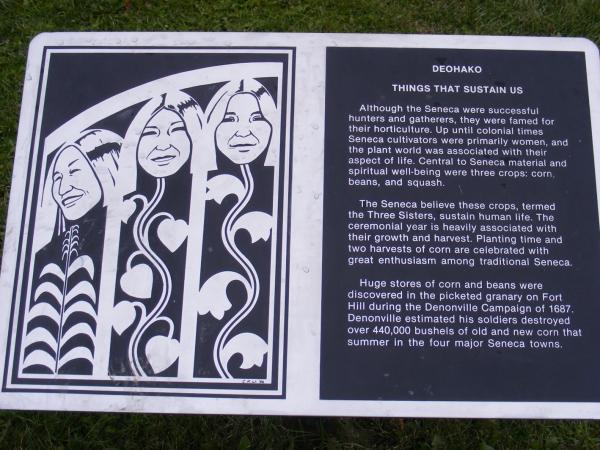“Three Sisters” Garden @ Wake


A new “three sisters” garden is being cultivated between Palmer Hall and Piccolo Hall – a collaboration between the Office of Sustainability and the Intercultural Center. The garden is intended to be an experiential learning space where the three sisters (corn, beans, squash), and other foods traditional to the Indigenous peoples of the Eastern Woodlands will be grown. Through partnerships with local and regional tribes, we aim to elevate Indigenous leadership, knowledge, and culture, especially those of the Saura, Catawba, Cherokee, and Lumbee tribes, on whose land our main campus resides.
Agriculture of the Three Sisters
Companion planting harnesses the reciprocal nature of human partnership with plants through the intentional planting of two or more crops together to enhance growth, and ultimately, lead to a more bountiful yield. Corn, beans, and squash, commonly called the three sisters, are one of the most well-known examples of companion crops today. The trio have been planted as companions by tribes across Turtle Island, the land that colonizers claimed as the Americas, for centuries. In some locations, the three sisters were adapted slightly to best fit the climate of the region. For example, a fourth sister, the Rocky Mountain Bee Plant, was added among the Tewa in New Mexico to attract pollinators.
To begin a three sisters garden, mounds of soil between 6-8” high are created. Corn seeds are planted in the center of the mound after the danger of frost has passed, typically around May 1st. As the corn stalks begin to grow, bean seeds are planted around them. The large, straight stalks of corn act as a trellis that the climbing bean plants can grow around. Beans, as with all legumes, form a symbiotic relationship with rhizobia, a family of bacteria. Beans provide the rhizobia with sugar and in return are provided with nitrogen, a key soil nutrient for plant growth and leafy greens. Squash is the last of the three to be planted as squash vines grow vigorously and have large leaves that act as a living mulch by shading the soil, depriving weeds of sunlight, and preventing moisture from escaping.
When planted as companions in this way, the three sisters support each other’s growth cycles. Since all three are staple calorie crops, their yields can be dried and stored in a cool damp place after harvesting, providing sustenance throughout the winter months. While this agricultural practice is often used in small gardens for individual use, traditionally the three sisters were utilized to nurture and sustain entire communities.
Origination of the Three Sisters
Together, the three sisters hold cultural and spiritual knowledge that have been important to Indigenous communities for generations. There are several legends surrounding the Three Sisters and how they came to be. The Cherokee legend involves three women who helped each other stay fed, hydrated and strong on the Trail of Tears, a lesson that the Cherokee used in planting their crops when they arrived in the Oklahoma Territory. This is one version of the Haudenosaunee (Iroquois) creation story of the Three Sisters:
The earth began when “Sky Woman” who lived in the upper world peered through a hole in the sky and fell through to an endless sea. The animals saw her coming, so they took the soil from the bottom of the sea and spread it onto the back of a giant turtle to provide a safe place for her to land. Sky woman had become pregnant before she fell. When she landed, she gave birth to a daughter. When the daughter grew into a young woman, she also became pregnant (by the West wind). She died while giving birth to twin boys. Sky Woman buried her daughter in the “new earth.” From her grave grew three sacred plants—corn, beans, and squash. These plants provided food for her sons, and later, for all of humanity.
Though the creation stories of the Three Sisters vary from tribe to tribe, many believe the Great Spirit passed corn, beans, and squash down to their people as special gifts ensuring survival, thereby intrinsically connecting them. The three crops were considered to be protected by the Three Sisters – spirits collectively called the Diohe’ko, meaning “our sustainers” or those who support us, leading to the crops themselves being called “the three sisters”.

The “three sisters” method of companion planting is an ancient tradition, and current practice, whose roots begin with Indigenous people and center around the reciprocity between the Earth and humankind. Our new garden is dedicated to the continued exploration and appreciation of Indigenous knowledge, culture, and horticulture practices, like that of the Three Sisters.

Click here to learn more about our recent Indigenous Peoples’ Day Celebration in the Three Sisters Garden.
